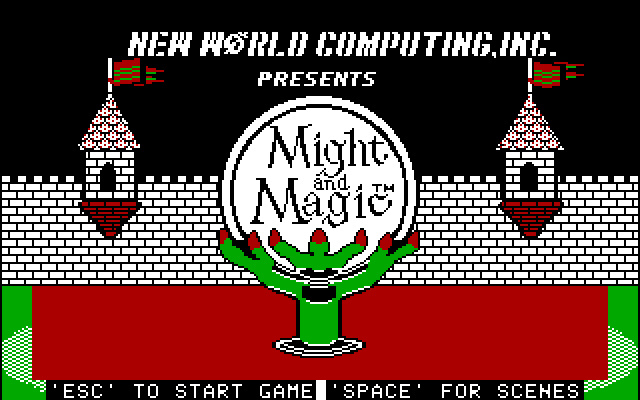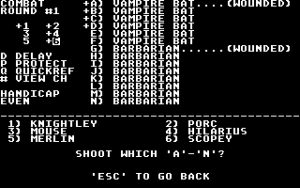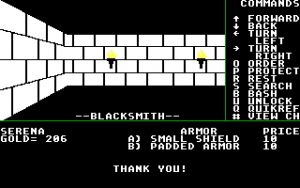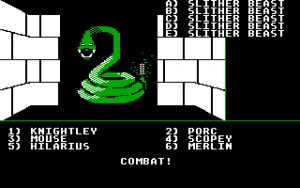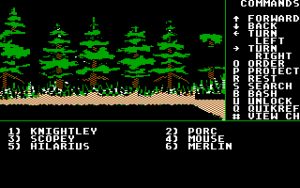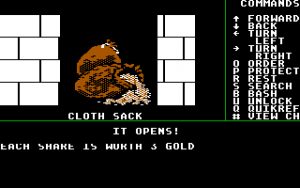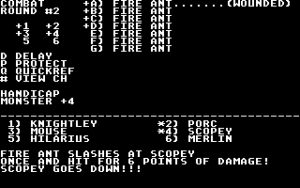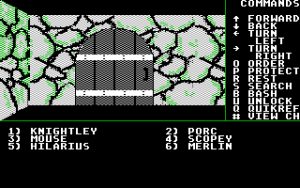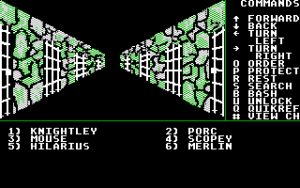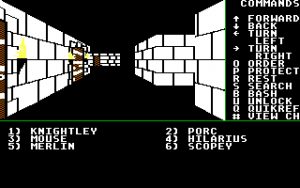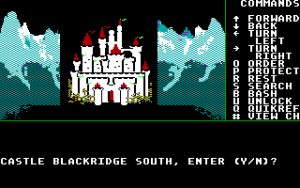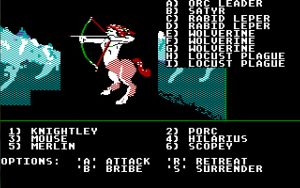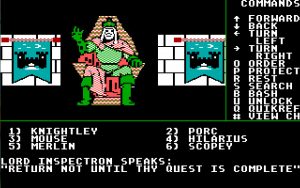This is the old, hard as nails, grid and turn-based, first-person RPG that started the Might and Magic series.
Release Date
Pros
Might and Magic Book One is a very solid dungeon crawler RPG if you can tolerate all the cons listed below. There is plenty to explore, many monsters to fight, complex puzzles to be solve and levels to gain.
Combat is completely text based, but it does have interesting mechanics. Only the front people can melee attack and people behind have to either shoot, cast spells or block. Depending on where you are, different number of people can melee attack. It is also possible for enemies to infiltrate your ranks which means anyone can melee attack.
Cons
The game is simpler to learn than Ultima IV with command keys displayed on screen. The game itself, however, is insanely difficult. Whether I was using the ready-made characters or my own created characters, my party got wiped out very frequently in the beginning. After grinding for a while to level up my characters, I still found the game difficult. I cannot remember if The Bard’s Tale (1985) was this difficult, but Ultima IV definitely is not.
The game is made even more difficult by what I call The-Bard’s-Tale-run-back-to-guild-to-save mechanism. In Might and Magic’s case, it is run to a town inn to save the game. This system can get quite frustrating when you are out adventuring and accomplish something big, but get wiped out on the way back to save the game.
The graphics are old, simple and give a first-person view of the world with different pictures representing things in front of you. Some key things are not indicated in the view though, like towns, entrance/exit doors and ladders up and down.
Might and Magic 3 to 6 all had stories in them. After completing Book One, I still have no idea what the story is! I have seen all the cryptic messages and travelled to all the places, but I still have not got a clue what the game is about. I only keep playing because I like slaying monsters, levelling up and exploring.
Just like Ultima IV the sounds are all PC speaker beeps. The music is limited which gives some queues, but do not play too much to get annoying.
Other Points
The game is turn-based and the movement is grid based.
There is no auto-mapping or gems to be peered to see a map of your surroundings. The manual even has tips on drawing your own maps. If you like this kind of thing then jolly good. For me, I have drawn enough maps with the Bard’s Tale series to give this a pass. I now use this nifty tool called Where Are We?. Apart from auto-mapping there are many options that allow you to “cheat” as little or as much as you want.
If you decide to create your own characters, be prepared to spend the time to roll good attribute values. This is rewarding if you are into these kind of things.
Biases
Reviewed the version from the Might and Magic 6-pack: Limited Edition from GOG.com.
I tried out the ready-made characters, but settled on playing good and proper using my own created characters. I completed the game using my created characters.
I have completed The Bard’s Tale (1985) and The Bard’s Tale II: The Destiny Knight although I cannot remember much about them.
I really liked Ultima IV: Quest of the Avatar.
I also really liked Might and Magic 3 to 6, although I have only completed MM6.
DRM
Might and Magic Book One is available DRM free as part of the Might and Magic 6-pack: Limited Edition from GOG.com.
Minimum Requirements (as stated on GOG.com)
- Windows XP or Windows Vista
- 1.8 GHz Processor
- 512MB RAM (1 GB recommended)
- 3D graphics card compatible with DirectX 7 (compatible with DirectX 9 recommended)
- 4GB HDD
- CD/DVD drive (or drive emulation utility)
- Mouse, Keyboard
Computer Played On
- Windows 7 64 bit.
- Intel Core i5 2.3GHz
- 4GB RAM
- NVIDIA GeForce GT 525M 1GB RAM
- Conexant SmartAudio with egg speakers or earphones. Or Logitech G35.
- Graphics settings are set to whatever I feel comfortable with playing on this PC. They are usually not set to the highest settings. All screenshots are taken with my settings.

